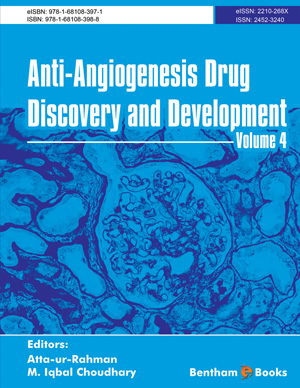Abstract
SHS investigation development is considered from the geographical and historical viewpoint. 3 stages are described. Within Stage 1 the work was carried out in the Department of the Institute of Chemical Physics in Chernogolovka where the scientific discovery had been made. At Stage 2 the interest to SHS arose in different cities and towns of the former USSR. Within Stage 3 SHS entered the international scene. Now SHS processes and products are being studied in more than 50 countries.
Abstract
As cancerous tumors grow their continued increase in cancer cell number becomes dependent on an increased blood supply from the surrounding host non-tumor tissue. Tumor cancer cells furthest from the host blood supply become hypoxic and without an increased blood supply these cancer cells become necrotic and die. The cancer cells that become hypoxic are triggered to synthesize hypoxia inducible factor (HIF) and vascular endothelial growth factor (VEGF) that is released from the hypoxic cell to stimulate a major increase in sprouting of endothelial cells. Thus neoangiogenesis in the tumor is apparently hypoxia driven in tumors.
Our research group found that a brief daily therapeutic electromagnetic field exposure (TEMF) slowed breast cancer tumor growth in syngenetic mice. The optimal TEMF exposure dose for retardation of tumors growth and angiogenesis without harmful side effects was a 120 Hz semi-sine wave given at 15 mT for 10 minutes a day. This TEMF therapy gave the maximum antiangiogenic effect with no noticeable side effects. Although this TEMF slowed tumor growth it did not cause the tumors to shrink in size.
An experiment was done to find out if combining two different therapies, one targeting angiogenesis (TEMF) and the other targeting killing of rapidly dividing cells (gamma irradiation-IR), might have an additive tumor inhibitive effect. In short TEMF, combined with IR proved to have a significant additive tumor inhibiting effect and TEMF was judged to be a safe effective adjunct to IR therapy.
Keywords:
Angiogenesis, Antiangiogenic therapy, Blood vessels, Blood vessel marker CD 31, Breast cancer, Electromagnetic field therapy, Endothelial cells, Gamma irradiation, Hypoxia, Hypoxia inducible factor, Metastasis, Morphometric analysis, Tumorous cancer, Tumor growth, Tumor structure.
Recommended Chapters
We recommend

Authors:Bentham Science Books






